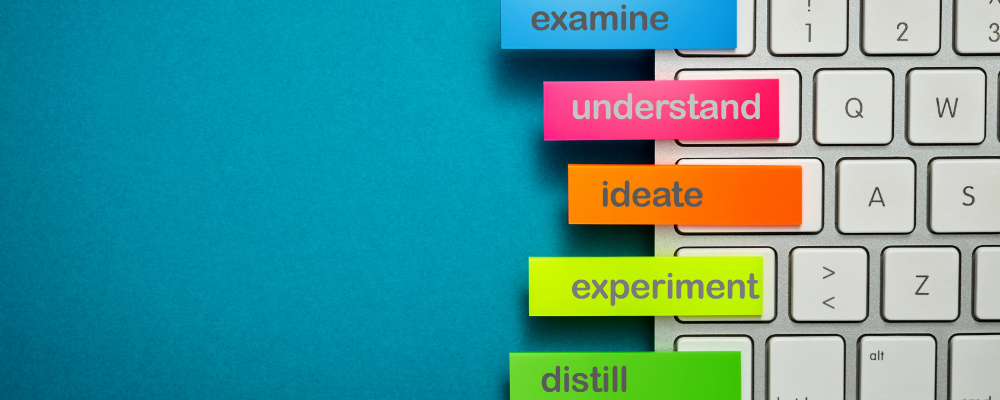What is the design process?
The design process is what UX designers use to guide them through their user-centered website or mobile app designs. A human-centered approach to problem-solving, based on discussion and iterative prototyping and testing, can be immensely helpful when attempting to solve complicated problems. This is exactly what the design process accomplishes.
Empathize, define (the problem), ideate, prototype, and test are five steps of design thinking, in that order.
Read More: 5 stages of the design thinking process
Why the design process is so crucial?
Most creative experts try to find their best ideas by relying on motivation and innovation. As a result, on days when they lack motivation, they are less productive.
It’s possible to get carried away with your imagination and come up with a solution that doesn’t work, even when you’re feeling inspired.
In both of these cases, the design process is the answer. The design process enables designers to be self-reliant and creative while following reason and practicality through a tried and true process. The design process has checks and balances in place to guarantee that innovative ideas don’t go off the rails.
Tools for the design process
There are many tools that offer efficient design process results. Some of these tools are:
Make a note of the pain points of your team leader or users at a meeting. To attend a meeting, you don’t need to bring along a notebook and a pen. Post-it notes are all you need to keep track of what needs to be done.
With the use of this technique, you will be better able to visualize the design process, as well as keep on top of tasks and deadlines.
Also, Post-it notes may be exported to Trello boards, a significant feature of the product. Design sprint sessions can be challenging enough without having to manually export all of the notes from each meeting into a Trello board. So this integration is very useful to a seamless design process.
Trello is one of the best project management tools you’ll ever use. It’s amazing how it makes it possible for groups to keep tabs on the status of a project and make adjustments as needed.
Your team and company can simply manage and allocate duties whenever necessary. It enables you to effectively lead a project in its many stages of execution with minimal stress and confusion. It also aids project managers in maintaining strict deadlines.
You can print wireframes, mockups, and sketchpads with UIPRINT’s help. Using UIPRINT paper, it’s easy for groups to quickly sketch out ideas and put them down on a whiteboard or similar surface for the rest of the team to edit, modify, and elaborate on during the iterative process. And, UIPRINT offers both desktop and mobile wireframes for a UX designer’s convenience.
Designers have their preferred mind-mapping tools, like Miro, for example. It’s one of the best mind-mapping tools, if your profession necessitates working quickly and agilely with others.
However, Whimsical holds a special place in my heart for the design process. What I love most about Whimsical is how quickly and easily you can create flowcharts, user journeys, and mind maps with only a few simple steps. It is designed to be user-friendly and approachable during presentations.
In addition, each Whimsical user receives four free boards. No matter how much money is at stake, this app is worth the price.
Figma reimagines what it means to be a designer. Amazingly, design can be shared across the corporation so easily.
Designers, clients, project managers, and other stakeholders have long complained about a lack of collaboration and transparency throughout the design process. Figma has completely resolved this issue with its platform. Multiple designers can collaborate on the same project at once. Stakeholders and key decision-makers can be looped in on project progress from start to finish.
To some extent, Figma also reimagines the process of obtaining feedback and ideas on a design. During the design process, clients can quickly add notes directly on the wireframes, which saves time in the long run. Figma has been a game-changer for the design process.
Because of TryMyUI’s capacity to conduct testing scenarios in a remote setting and in ways that no other usability testing program has been able to, we firmly believe that it’s the best platform to test your website or mobile app’s user experience and interface.
This powerful tool provides us with a precise analysis and data showing how users interact with and respond to the design. You will gain insights through video, post-test survey results, and many other features that offer qualitative and quantitative data. As well, the platform makes it easy to share results with the team and pinpoint the exact issues with the interface.
Slack can help you keep track of your team’s conversations if they take place in a shared workspace. A better topic debate is possible since it allows us to discuss in the channel of our choice. There is no need to divide the team into multiple groups to discuss various themes.
Slack’s ability to interact with so many other apps, including Trello, Google Drive, Dropbox, and others, is one of its most compelling features. With it, we’re able to keep track of the files we’re focusing on.
Paper has been a great tool for obtaining user feedback and insights. It makes it easy for teams to openly discuss concepts throughout the design process. Whenever a member of the team finishes research, all they have to do is quickly provide input on the section in question. It aids the rest of the team in documenting design requirements by collecting data.
Conclusion
Hopefully, by having a knowledge of these tools, you can easily determine which one suits you, your team, and your project. Look at the features and benefits of each tool and figure out which tool meets most of your design process requirements. This way you will be better able to find the best design process tool.





